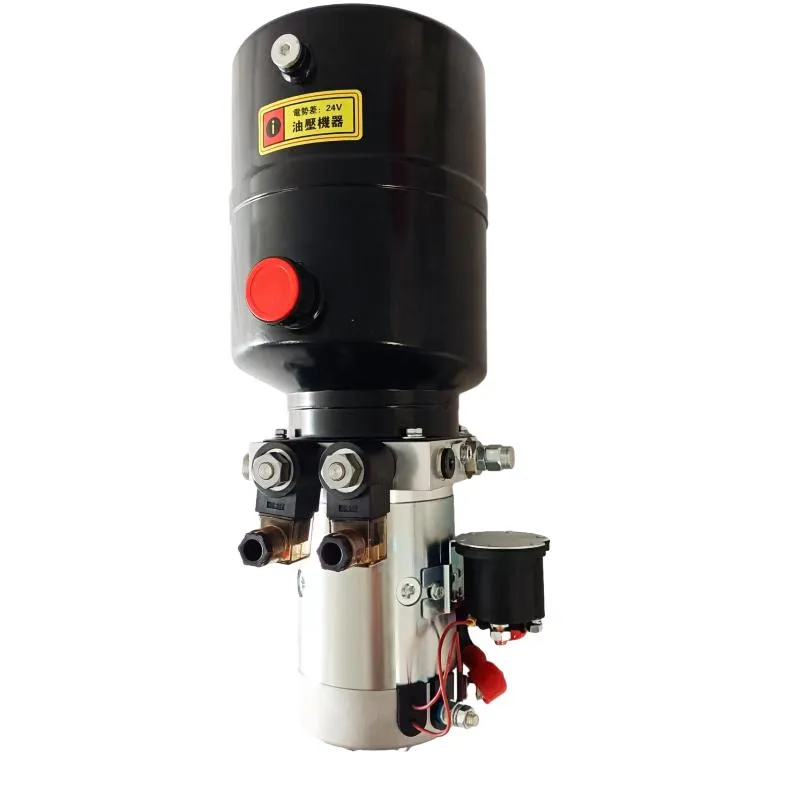Dec . 14, 2024 16:50 Back to list
Hydraulic System Cylinders for Efficient Fluid Power Applications and Solutions
Cylinders in Hydraulic Systems Essential Components for Power Transmission
Hydraulic systems are integral to modern machinery and industrial processes, providing the force and precision needed to perform a wide variety of tasks. At the heart of these systems lies the hydraulic cylinder, a crucial component that translates hydraulic energy into linear motion. This article explores the significance, design, applications, and maintenance of hydraulic cylinders within hydraulic systems.
Understanding Hydraulic Cylinders
A hydraulic cylinder is a mechanical device that uses pressurized fluid to create linear motion. It consists of a cylindrical housing, a piston, and two ports for the inlet and outlet of the hydraulic fluid. When fluid enters one side of the cylinder, it exerts pressure on the piston, forcing it to move. This movement can be harnessed to lift heavy loads, push components, or operate machinery.
Hydraulic cylinders are classified into different types, including double-acting and single-acting cylinders. Double-acting cylinders allow fluid to act on both sides of the piston, enabling movement in both directions. In contrast, single-acting cylinders use fluid pressure on one side only, typically relying on gravity or a spring to return the piston to its original position. The choice between these types depends on the specific application requirements.
Design Considerations
The design of hydraulic cylinders is critical for ensuring reliability and efficiency. Key factors influencing design include
1. Material Selection Hydraulic cylinders are usually made from high-strength steel or aluminum alloys to withstand high-pressure conditions while remaining lightweight. Corrosion-resistant coatings are often applied to enhance longevity.
2. Seal Integrity Seals prevent hydraulic fluid from leaking and are essential for maintaining pressure within the system. The selection of appropriate seal materials and designs is vital for ensuring operational efficiency and preventing contamination.
3. Bore and Stroke Length The bore size determines the force output of the cylinder, while the stroke length dictates how far the piston can move. These dimensions must be carefully calculated based on the specific application and load requirements.
4. Mounting Style Cylinders can be mounted in various orientations, depending on the application. Common mounting styles include pins, trunnions, and flanges, each providing distinct advantages in terms of stability and ease of installation.
cylinder in hydraulic system product

Applications of Hydraulic Cylinders
Hydraulic cylinders find applications across a diverse range of industries, demonstrating their versatility and effectiveness. Some key applications include
1. Construction Equipment Excavators, bulldozers, and cranes utilize hydraulic cylinders to lift, push, and manipulate heavy materials. The precise control offered by hydraulic systems is essential for executing complex operations safely.
2. Manufacturing In industrial settings, hydraulic cylinders are used in presses, injection molding machines, and automated assembly lines. They provide the force necessary for forming and shaping materials.
3. Automotive Hydraulic cylinders are integral to automotive systems, such as brakes and steering. They allow for the smooth and efficient transfer of power, ensuring vehicle safety and responsiveness.
4. Agriculture Hydraulic systems in tractors and other farming equipment rely on hydraulic cylinders to perform tasks like plowing, lifting, and digging, enhancing productivity in agricultural operations.
Maintenance and Longevity
Proper maintenance of hydraulic cylinders is vital for ensuring long-term performance and preventing failures. Regular inspection for leaks, wear, and damage is essential. Additionally, maintaining optimal fluid levels and replacing hydraulic fluid at recommended intervals help preserve the integrity of the system.
Operators should also be aware of the signs of potential issues, such as unusual noises, decreased performance, and visible leaks. Addressing these problems early can prevent costly repairs and downtime.
Conclusion
Hydraulic cylinders are indispensable components of hydraulic systems, playing a pivotal role in various applications across numerous industries. With careful design, robust construction, and attentive maintenance, these cylinders can deliver reliable and efficient performance, driving the success of modern machinery and industrial processes. As technology advances, the evolution of hydraulic cylinder design and application continues to enhance productivity, efficiency, and safety in an ever-changing industrial landscape.
-
Fork Lift Power Units - Hebei Shenghan | Efficiency, Reliability
NewsJul.13,2025
-
1.5-Ton Turbocharged Cylinder-Hebei Shenghan|Hydraulic Solution,Energy Efficiency
NewsJul.13,2025
-
Auto Hoist Power Units-Hebei Shenghan|Efficiency&Industrial Lifting
NewsJul.13,2025
-
Double Acting Power Units-Hebei Shenghan|Hydraulic Solutions,Industrial Efficiency
NewsJul.13,2025
-
1.5 Ton Lifting Cylinder 70/82-40-290-535 - High-Performance Hydraulic Solution | Hebei Shenghan
NewsJul.13,2025
-
Fork Lift Power Units - Hebei Shenghan | Efficiency&Reliability
NewsJul.13,2025
